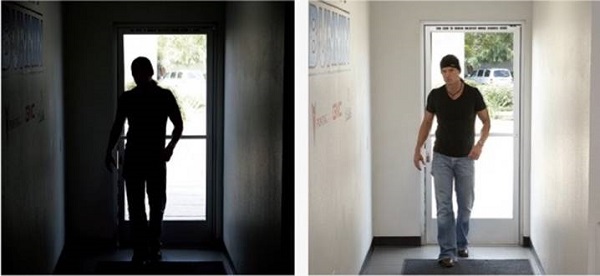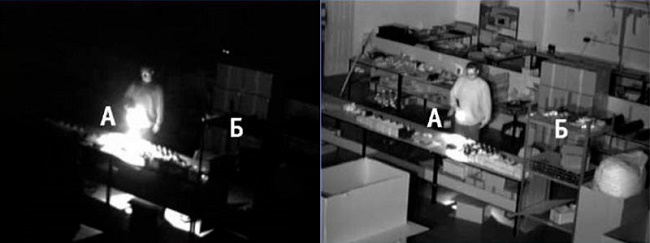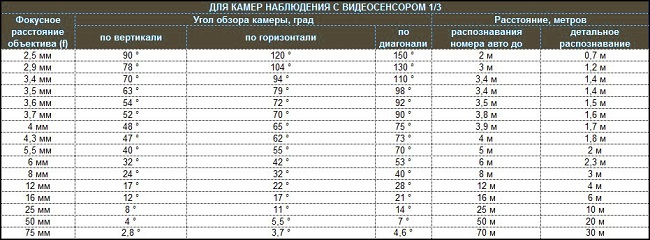Parameters and functions of the camcorder
In modern realities, in addition to professional video shooting, video cameras are most in demand. in video surveillance for public and private facilities. The quality of the video sequence being recorded and broadcast on the monitor depends on the technical equipment of the device. These are the parameters of the video camera, which first need to pay attention when choosing the right equipment for specific purposes. It is also important to choose a device with the most complete set of functions necessary in practice. Due to the lack of some possibilities, the acquisition will be in vain, or the buyer will significantly overpay for the presence of unnecessary functions.
Content
Improved image quality at different light levels
The quality of shooting directly depends on object lighting. With a normal amount of light, there are no problems with the clarity of the resulting image. Under dynamically changing shooting conditions, there are problems with the quality of the recorded video sequence. To eliminate the problem, video cameras are equipped with hardware and software for image processing:
- highlight compensation function (BLC);
- hardware combination of long and short exposures in a single frame (WDR);
- software brightening of dark areas (D-WDR).
The ultimate goal of these means is one - to improve the quality of the image in conditions of insufficient or, on the contrary, super-intensive illumination of the objects of the survey. Typical examples in the need for image processing are as follows.
- When a car has headlights turned on in the dark, it’s difficult to recognize its license plates.
- Bright lighting makes it difficult to consider the features of a person entering the door or entering the territory of the observed object.
- With insufficient light, it is difficult to see small details in the observation area.
Sample frame without the use of enhancement features:

Backlight compensation function according to a specific setting, adjusts the luminous flux by narrowing / widening the iris. Dynamic exposure change through an electronic shutter and auto iris makes the image of the object clearer and clearer. The disadvantage of the BLC function is that excessively lit secondary areas on the pictures will be even lighter.
Sample frame with highlight compensation function enabled:

Camera equipped WDR function, simultaneously takes a frame with different shutter speeds: short and long. On the first, the object itself is more clearly seen and the surrounding details are blurred, and on the second, the shadow is in the area of the object, but the frame areas around it are clearly visible. Next, a hardware overlay of two distinct areas in a single image is performed. The picture is clear, but there may be some distortion in the transmission of color.
An example of using hardware overlay frames:

D-WDR software function processes the captured frame by digitally adjusting the gradients of the gray tint. The color rendition does not suffer, and the subject is clearly visible, but the surrounding background may be somewhat blurred.
An example of software frame processing:

Automatic adjustment of the light signal
For surveillance cameras, an important element of equipment is the ability to dynamically change the power of the light flux in case of excessive or insufficient illumination of the object of observation. The AGC function in a video camera is the technology that is responsible for the dynamics of the light signal. Used in conjunction with other image enhancement features.
Equipped with the Automatic Gain Control function, the video camera automatically adjusts each video path to the standard, depending on the light level of the signal. The operator at the console enters well-viewed picture even with poor coverage of the observed area.

The standard fork dynamic gain control 12 - 20 dB. The effect of using the AGC function depends on the resolution of the camera, the illumination of the area and the distance to objects in the focus of the camera, the angle of view and other technical characteristics of the device.
The relationship of the viewing angle and focal length
The parameter viewing angle characterizes the latitude of objects captured in a frame and is specified in degrees.This parameter is in inverse relationship with another parameter - the focal length of the lens of the video camera (indicated in mm).
A wide-angle camera with a 2.8-5.0 mm lens usually provides a panoramic view of the area. Long-focus lenses 28.0-75.0 mm allow to consider what is happening in detail.
Cameras can be fixed focus and varifocal (customizable manually or automatically). Experts select suitable for solving the tasks of the camera using the summary table of the ratio of parameters:

Camera lenses with adjustable focal length are called zoom lenses or zoom lenses.. A video camera with varifocal capabilities can at a close distance give a panoramic picture and a close-up of an object located in the background.

Sensitivity is an important feature in video surveillance.
The sensitivity parameter of a video camera determines the minimum level of illumination of an object at which the device is able to distinguish objects in sight. The measure of this characteristic is indicated in lux. The sensitivity of the matrix apparatus directly affects the image quality.The higher the sensitivity index of the matrix, the more intense should be the illumination of the object to get a clear picture.
Most black-and-white instruments of surveillance systems have a sensitivity parameter of 0.4 - 0.01 lux, for color cameras 3.0 -0.3 lux. Highly sensitive instruments for observation at night, in difficult visibility conditions (fog, rain, snow) are characterized by a parameter up to 0.00015 lux.
Electromagnetic noise suppression function
When the camcorder operates in a changing light environment, interference occurs that degrades the picture quality. DNR function in a video camera, this is a system for eliminating electromagnetic noise. Interference is classified by a number of features. There are several types of noise:
- pulse (in the picture reflected in the form of grains);
- spotty blur, whitish - gray;
- Gaussian noise.
2D and 3D –DNR functions designed to reduce the distortion of images caused by noise. At the same time processing 3D more effectively copes with the task.

The figure on the left is a raw frame, and on the right is a frame using the noise canceling function.
Conclusion
All of these parameters somehow affect the quality of shooting.The price of the device will depend on the technical equipment of the video camera. Choose a device with a set of characteristics that best meet the conditions of operation.

/rating_off.png)











